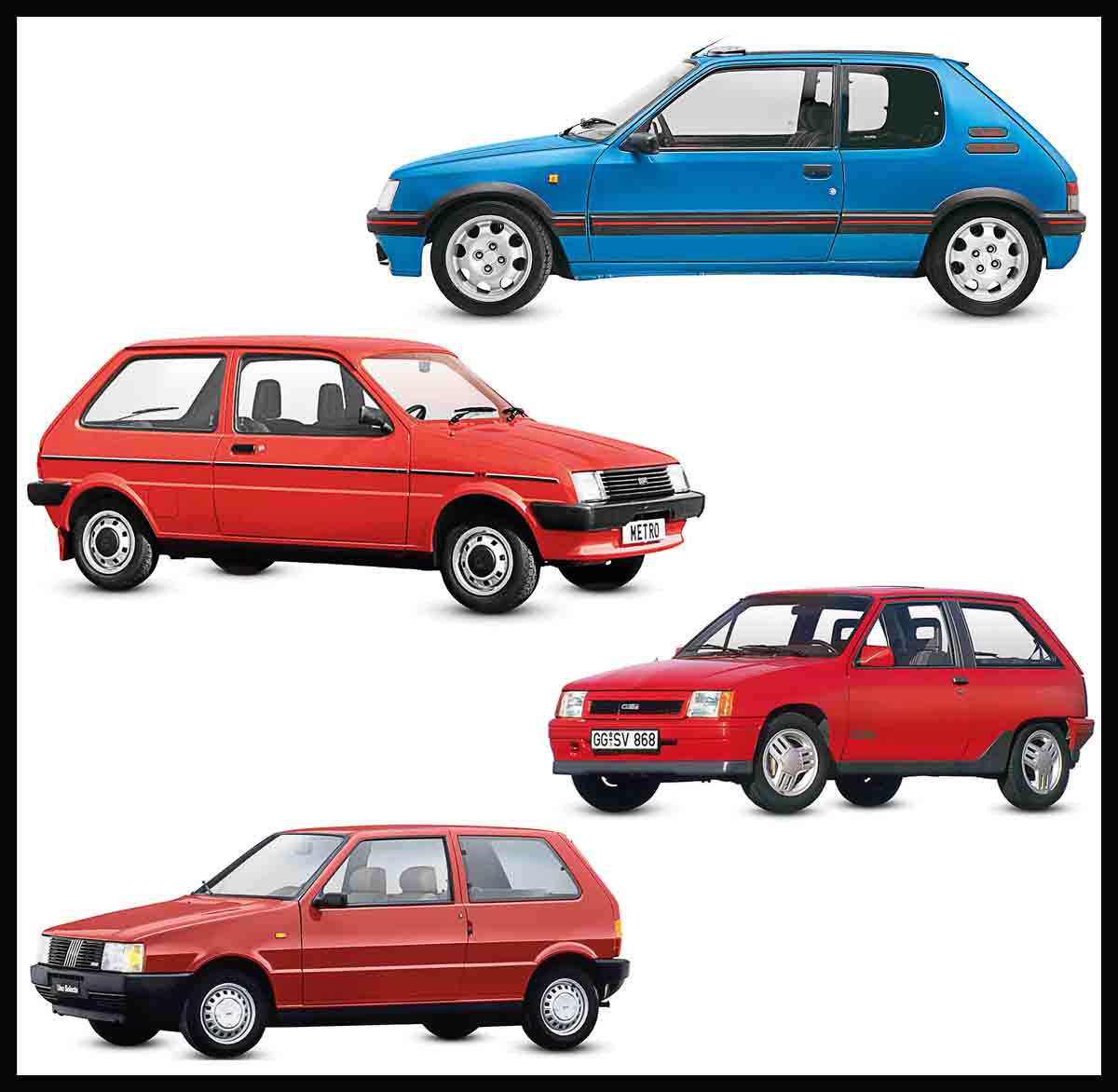
Superminis
The small-car template set in the mid-1970s matured in the ’80s. Front-wheel drive, a transverse four-cylinder engine with the gearbox and final drive on the end, and a hatchback body with three or five doors became the format for the majority of car sales in Europe and beyond, as buyers recognized he practicality and all-round competence of these superminis. Advances in suspension design meant they were fun to drive, too, and car manufacturers followed the lead set by the Volkswagen Golf GTI to insert hot, fuel-injected motors into their shopping cars, making for compact performance machines.
Peugeot 205 GTi, 1984
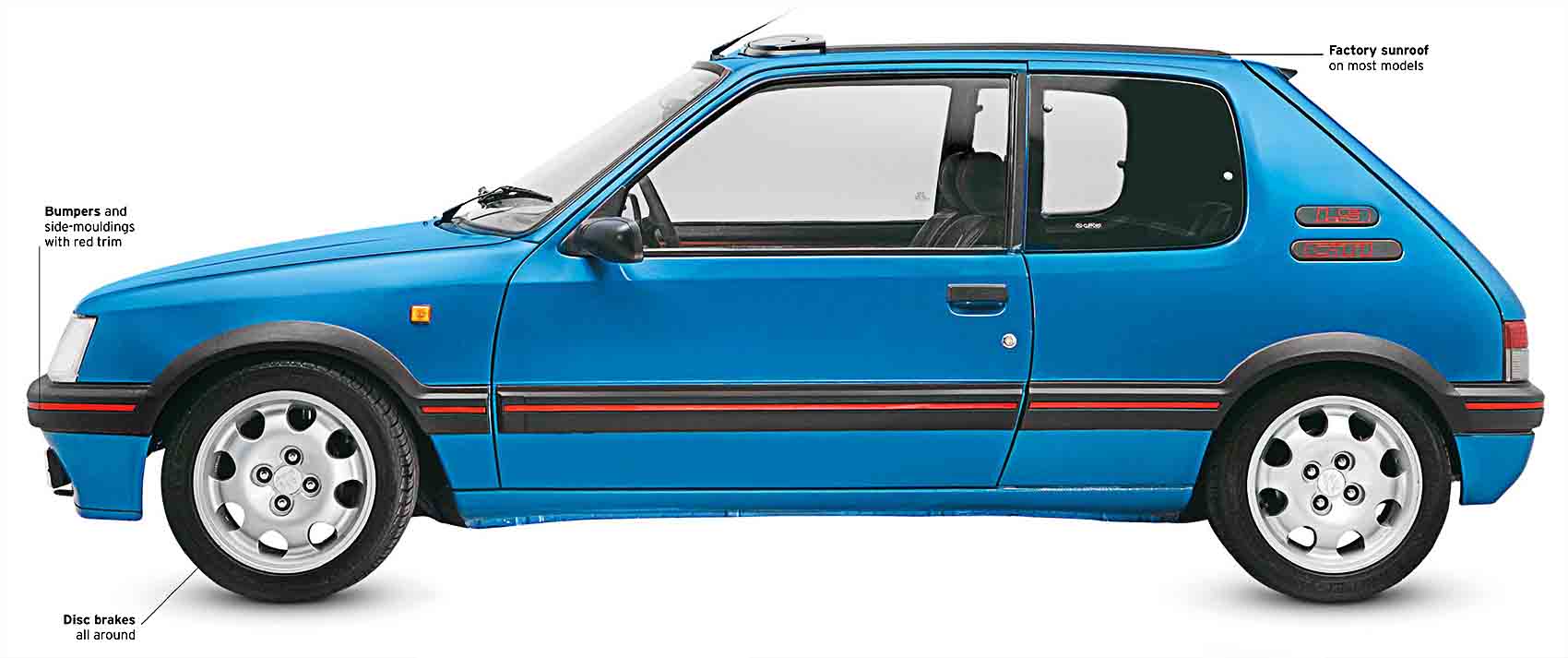
| Origin | France |
| Engine | 1,905 cc, straight-four |
| Top speed | 121 mph (195 km/h) |
The sparkling GTi was an impressive derivative of Peugeot’s 2.7-million selling hatchback. Heavy-steering, but with responsive handling, its fuel-injected engine provided plenty of power. First introduced with a 1,580 cc engine, this was replaced in 1986 with a larger, more powerful 1,905 cc unit that produced 130 bhp.
Austin Mini-Metro, 1980
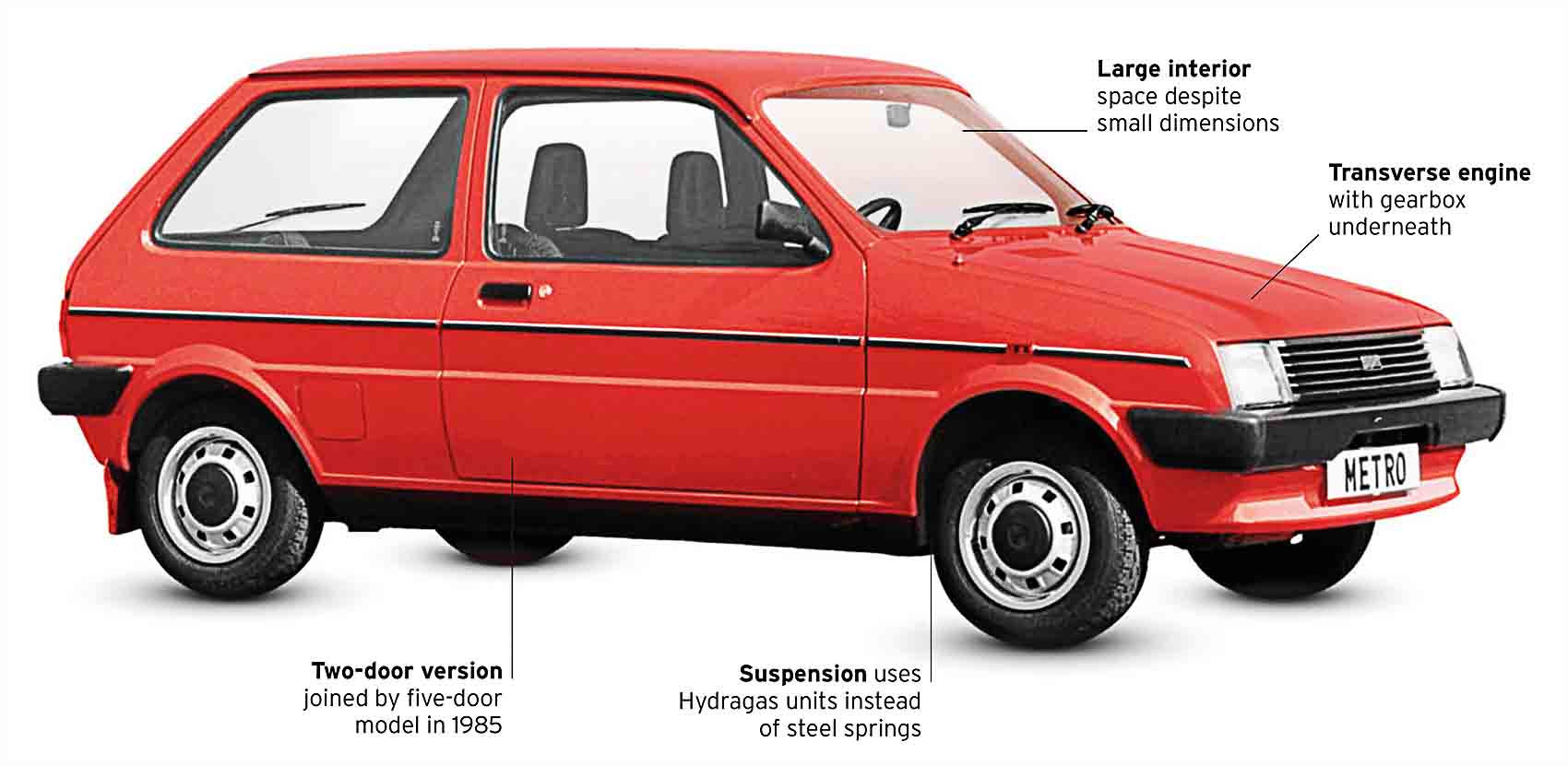
| Origin | UK |
| Engine | 998 cc, straight-four |
| Top speed | 84 mph (135 km/h) |
Only 21 years after the Mini, in 1980 a new British supermini arrived. The Mini-Metro—later just plain Metro—carried over the old A-series engines dating back to 1953. Well-packaged, it had innovative Hydragas suspension.
Opel Corsa GSi/GTE, 1983
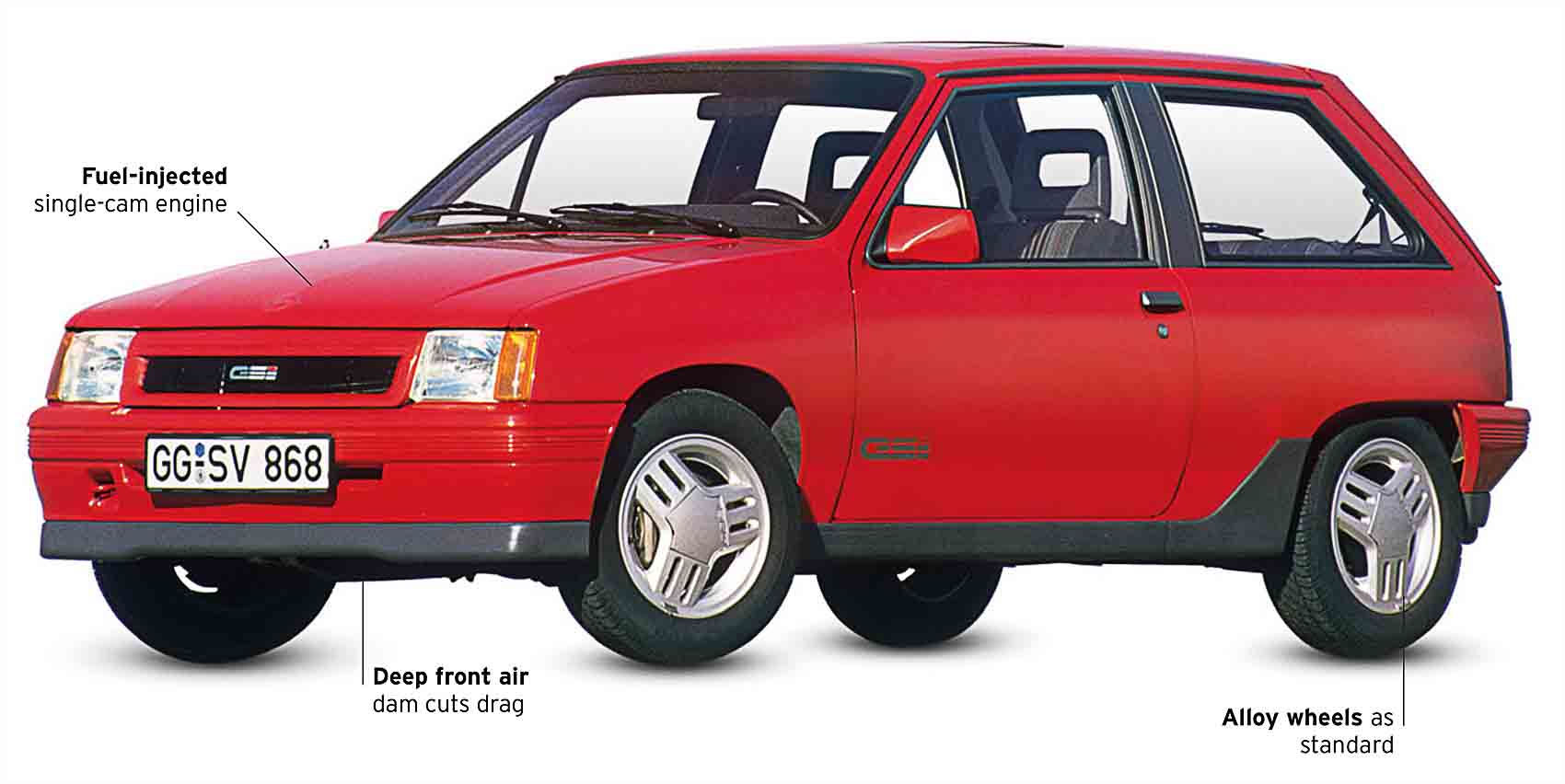
| Origin | Spain |
| Engine | 1,598 cc, straight-four |
| Top speed | 117 mph (188 km/h) |
The “hot hatch” GSi/GTE joined GM’s supermini Corsa/Nova family a bit later than the other 1.0-1.4-liter models and was by far the most stylish looking, and fastest, of the group. Tough, reliable, and good fun, it was built in Spain like Ford’s Fiesta.
Fiat Uno, 1983
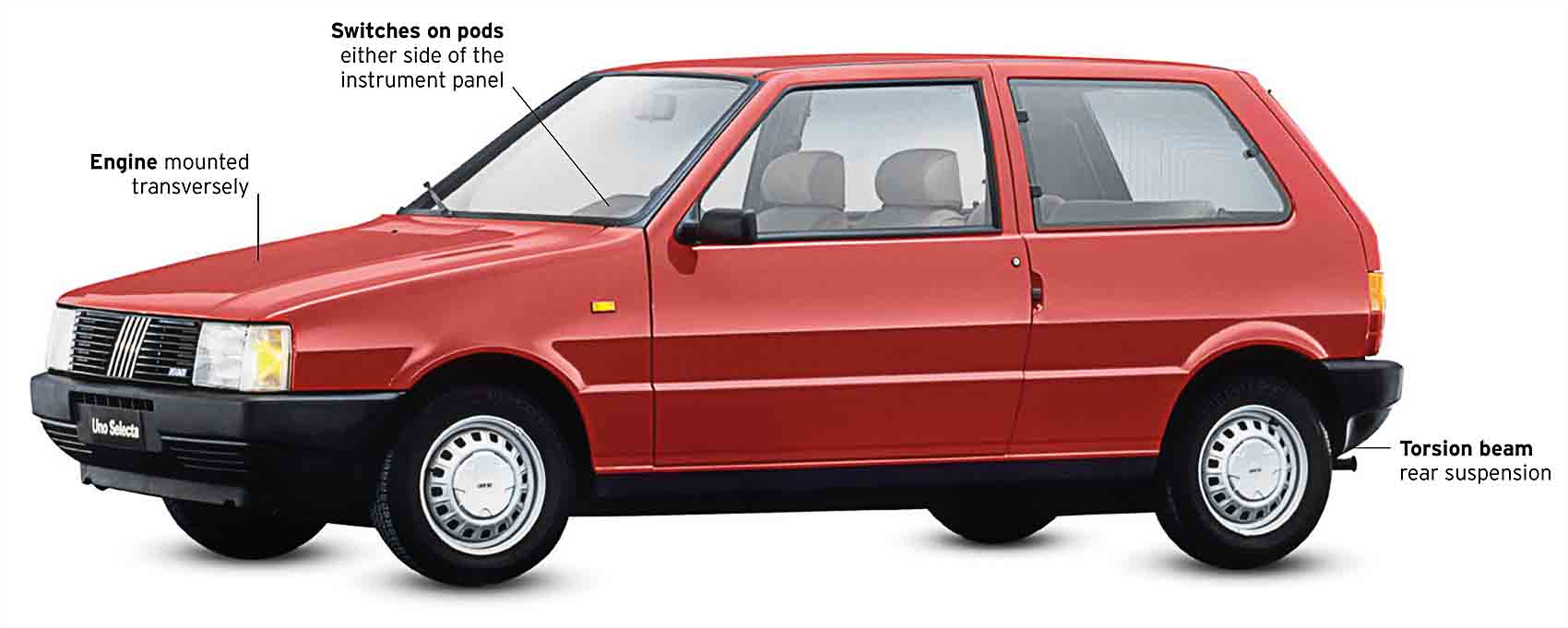
| Origin | Italy |
| Engine | 1,301 cc, straight-four |
| Top speed | 104 mph (167 km/h) |
The 127’s successor was a great all-rounder, and sold 6.5 million by 1994. Giugiaro’s Italdesign company designed the Uno with a taller body than other superminis, providing more passenger space. Nimble handling and eager engines added to its popularity.
Citroën AX, 1988
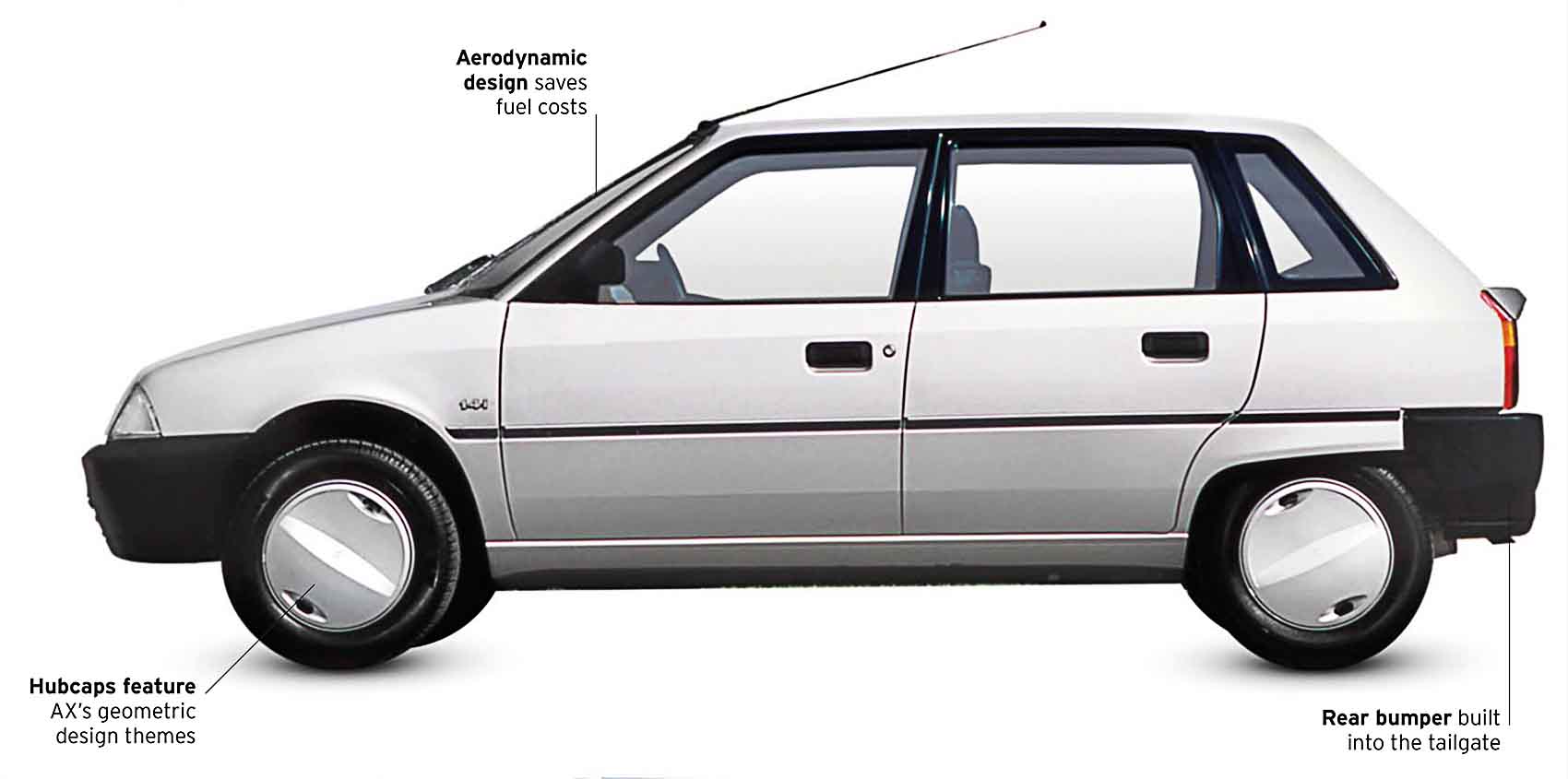
| Origin | France |
| Engine | 954 cc, straight-four |
| Top speed | 83 mph (134 km/h) |
Replacing the Visa and LNA models, the AX was available at first as a three-door, then as a five-door in 1988. It shared its running gear with small Peugeots, but had its own chic styling. Good aerodynamics made for an economical drive.
Škoda Favorit, 1987
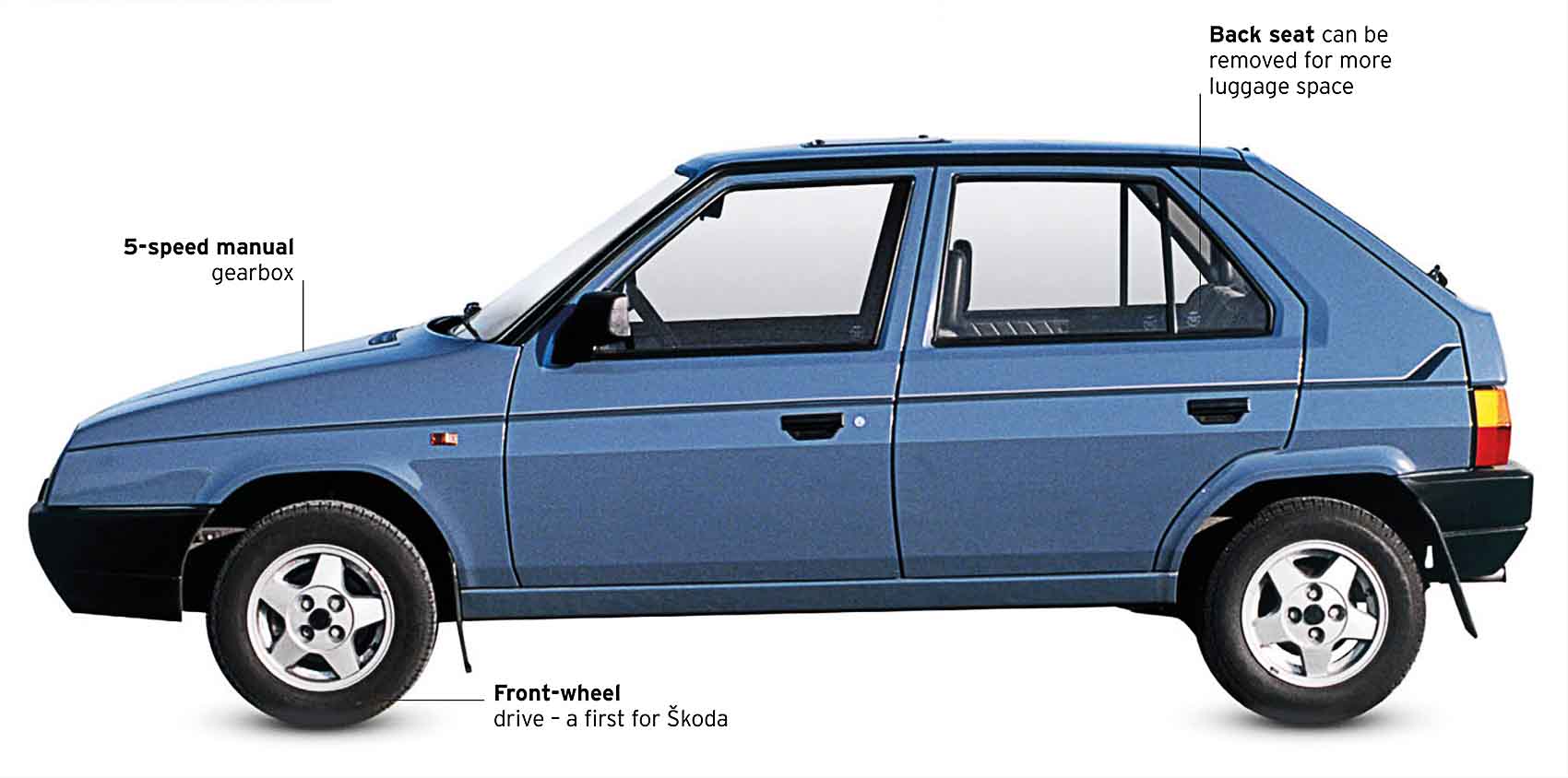
| Origin | Czechoslovakia |
| Engine | 1,289 cc, straight-four |
| Top speed | 92 mph (148 km/h) |
This was Škoda’s first front-engine, front-wheel drive car, following years of rear-engined models. Styled by Bertone, there was just one engine option. The Favorit became one of Central Europe’s most popular cars, and its success meant many buyers took the company seriously for the first time.
It is a quote. The Classic Car Book – The Definitive Visual History 2016




